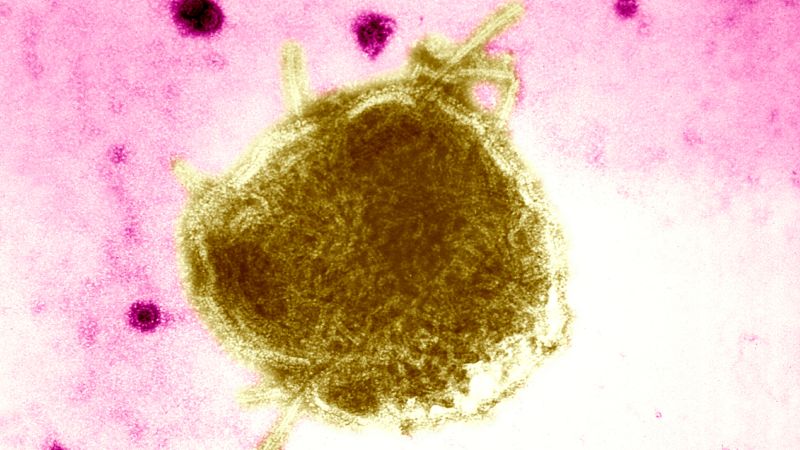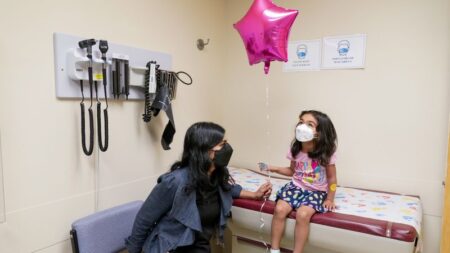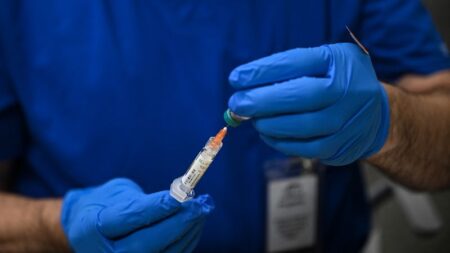In recent weeks, West Texas has been grappling with a significant measles outbreak, raising alarm bells among health officials and parents alike. The illness has numerous implications for young children, who are particularly susceptible. Understanding the signs and symptoms of measles becomes essential, especially as the community faces an increase in cases. Measles, widely recognized as one of the most contagious diseases globally, can lead to severe health complications ranging from pneumonia and encephalitis—an inflammation of the brain—to blindness and, in extreme cases, death, particularly for children under the age of five.
Dr. Melissa Stockwell, a professor of pediatrics at Columbia University’s Vagelos College of Physicians and Surgeons, indicates the severity of the disease with alarming statistics. She reports that approximately one in five unvaccinated individuals infected with measles will require hospitalization. Furthermore, pneumonia, a frequent complication of the disease, affects about one in every 20 young patients afflicted with measles. Overall, it is estimated that around three out of every 1,000 children infected can succumb to serious respiratory or neurological issues. Given this backdrop, Stockwell urges families to consult their child’s healthcare provider for accurate information about measles and the critical necessity of vaccinations.
Vaccination remains the most effective line of defense against measles. Nevertheless, recent revelations from the U.S. Centers for Disease Control and Prevention (CDC) indicate a concerning trend. An unprecedented number of kindergarteners in the United States had vaccination exemptions for mandatory immunizations in the previous school year, resulting in over 125,000 new students receiving at least one missing state-required vaccine. The goal set by the U.S. Department of Health and Human Services is for 95% of kindergarteners to receive two doses of the measles, mumps, and rubella (MMR) vaccine. Unfortunately, this threshold has not been met for four consecutive years.
Currently, most measles cases in the Texas outbreak are concentrated in Gaines County, where vaccination coverage is alarmingly low. In fact, nearly 20% of incoming kindergarteners for the 2023-24 school year lacked the MMR vaccine. This situation becomes increasingly critical as measles symptoms can mimic those of other respiratory infections like the flu or a common cold in their initial stages. Dr. Glenn Fennelly, a pediatric infectious diseases specialist at Texas Tech Health El Paso, emphasizes that three specific signs—cough, conjunctivitis (red eyes), and coryza (severe nasal congestion)—typically occur together during early measles.
Although these symptoms can easily be confused with other respiratory ailments, distinct characteristics, such as a high fever exceeding 104 degrees Fahrenheit, a red, blotchy rash, and the presence of Koplik spots (tiny white spots in the mouth) can indicate a measles infection. Stockwell also notes that a hallmark rash usually appears three to five days after the onset of other symptoms. Parents are advised to contact healthcare providers if their child displays any combination of these symptoms, as measles is highly contagious and requires immediate attention.
The measles virus spreads effortlessly through respiratory droplets produced when an infected individual coughs or sneezes. Remarkably, it can remain airborne or cling to surfaces for up to two hours following the infected person’s departure. The highly contagious nature of measles is alarming; it is estimated that one individual can infect 9 out of 10 unvaccinated contacts. The outbreak poses significant challenges to public health; therefore, it is paramount for parents to ensure their children are vaccinated as recommended—starting at one year of age, with a second dose between four and six years old.
The MMR vaccine is considered safe and efficacious; in fact, one dose offers a 93% chance against measles, while two doses increase this protection to 97%. The CDC recommends that children should receive these two doses to establish long-term immunity. Nonetheless, the reality remains that no vaccine guarantees absolute protection, thereby necessitating increased vaccination coverage to minimize outbreaks.
In addition to vaccination, the CDC advises that individuals exposed to measles should receive the MMR vaccine within 72 hours to potentially reduce the severity of the illness. For those who missed vaccinations, older children and adults can still receive the MMR vaccine, while individuals born before 1957 are believed to have natural immunity due to likely prior exposure to the virus.
Back in the pre-vaccine era, measles claimed approximately 2.6 million lives annually on a global scale. Recently, the World Health Organization estimated that approximately 107,500 deaths from measles occurred in 2023, predominantly in countries with low vaccination rates. Disconcertingly, misinformation surrounding vaccines, including the baseless association between vaccinations and autism, has hindered efforts to achieve adequate immunization in the United States.
Dr. Fennelly reassures that measles vaccines have been proven safe and effective, pointing out that millions of children have received vaccinations without complications. The true fear regarding measles should lie












